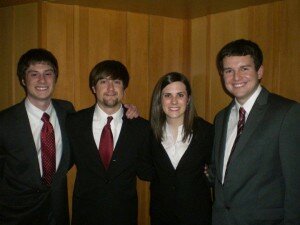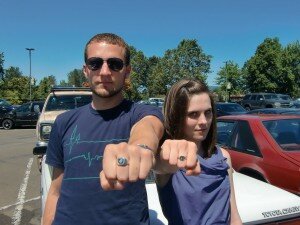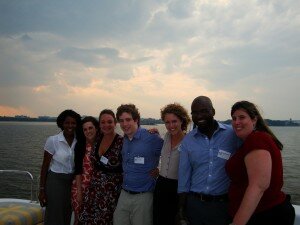 This week NBC is hosting Education Nation, a nationally broadcast, in-depth conversation about improving education in America and we’re participating by sharing resources for volunteering in schools.
This week NBC is hosting Education Nation, a nationally broadcast, in-depth conversation about improving education in America and we’re participating by sharing resources for volunteering in schools.
Whether you are a beginner or a pro at working with children, here are a few tips to help everyone feel more comfortable.
Before you volunteer in a school, you can benefit by observing a classroom teacher, club leader, or coach’s interaction with students.
How does the teacher organize material?
How does the teacher react to disruption and misbehavior?
What language and gestures does the teacher use to get points across?
Observation will help you learn successful strategies for connecting with the students.
When you begin working with students, remember these basic tips:
- Have a set goal and routine from day one and stick to it. Students will recognize if you are not prepared or if you change your course.
- Remain in charge. Do not let the students take control of a situation.
- If appropriate, discourage and reprimand bad behavior.
- If appropriate, reward achievements and good behavior.
- Reflect and Revise. Consider how well your strategies work and how they can improve for next time.
- Remain flexible. Sometimes something unexpected will happen; do not let it ruin your experience or your goals.
- Be sure to always follow the school’s rules and procedures.
Boundaries
As a volunteer, you are an important part of a student’s life. Schools and districts often have rules and policies for appropriate interaction with students.
Some schools discourage personal interaction such as hugging or pats on the back.
While these actions may seem harmless, an outside observer may perceive them differently.
You should always check with the principal/teacher to make sure you fully understand the rules.
Discipline
Remain open with your students and let them know what is appropriate and what behavior you will not tolerate.
Classroom teachers often create a system for misbehavior.
Learn what school officials do with misbehaving students and follow the school’s procedures.
Safety
It is essential to know procedures for dealing with potentially harmful situations that affect safety and wellbeing of students.
Before you begin volunteering, know where you can access a first aid kit and where the nurse’s office is located.
Depending on your specific volunteer role, you may be asked to be CPR certified. Many community centers offer free or cheap trainings.
You should also understand school procedures for fire, severe weather, and other harmful situations.
Confidentiality
Schools have strict confidentiality rules when it comes to students.
Don’t discuss the student, his/her work, achievement record, or any other personal information with anyone but the student’s teacher or principal.
You can of course, talk to others about an interesting detail or an exciting moment you experienced while volunteering; just leave out the name of the student.
Physical, Mental, Sexual Abuse
If a student tells you of any harmful incident that happened to him/her or anyone around them, you must report this to a teacher or principal.
The teacher/principal will report the information to the correct person.
Confidentiality is extremely important.
If a student wishes to tell you something, let them know that he/she can trust you, but do not promise to keep everything a secret; you may need to retell the story to a proper authority.
Do not take matters into your own hands and do not approach the alleged abuser.
Diversity
Schools contain a collection of students from diverse backgrounds and circumstances.
As a volunteer, you should prepare yourself to work with students from different backgrounds and families.
Students often have set value and belief systems taught to them by their families and guardians.
(Types of values include ethical/moral values, doctrinal/ideological (religious, political) values, social values, and aesthetic values.)
Schools are a safe place to exchange ideas and concepts.
It is not a volunteer’s place to attempt to correct or change a student’s beliefs that are otherwise not harmful to him/her, you, or others.
If a student disrespects a classroom’s diversity, it is appropriate to teach him/her why their words and actions are harmful.
Remember that diversity challenges values, adds perspective, and supports growth and development.
You may find students eager to learn about those different from themselves.
It’s healthy to support curiosity, understanding, and compassion.
It is important to respect and learn from each other.
“We must work together, learn together, live together, serve together. On the forge of common enterprise, Americans of all backgrounds can hammer out a common identity. We see it today in the United States military, in the Peace Corps, in AmeriCorps. Wherever people of all races and backgrounds come together in a shared endeavor and get a fair chance, we do just fine. With shared values and meaningful opportunities and honest communications and citizen service, we can unite a diverse people in freedom and mutual respect.”
–President Bill Clinton, State of the Union Address, January 27, 1998
For more information, visit HandsOn Network’s Education Nation site.
For more ways to get involved in schools, visit NBC’s Education Nation site.






 This week NBC is hosted
This week NBC is hosted  Creating a community garden is a great way to teach children important principles of math and science, while at the same time sharing lessons about the environment and health.
Creating a community garden is a great way to teach children important principles of math and science, while at the same time sharing lessons about the environment and health.





 1. Tutor a child.
1. Tutor a child.






 by Emily Blaylock,
by Emily Blaylock,  In high school I became accustomed with the reality that I would be on my own for continuing onto college. I had good grades and potential academic scholarships on the horizon, but I knew they would not be enough to cover the skyrocketing costs of college tuition. Yet just weeks prior to high school graduation, I received a scholarship that not only offset tuition costs, but also the costs of: books, technology, transportation, and housing. I consider myself blessed and am still overwhelmed with gratitude for this scholarship.
In high school I became accustomed with the reality that I would be on my own for continuing onto college. I had good grades and potential academic scholarships on the horizon, but I knew they would not be enough to cover the skyrocketing costs of college tuition. Yet just weeks prior to high school graduation, I received a scholarship that not only offset tuition costs, but also the costs of: books, technology, transportation, and housing. I consider myself blessed and am still overwhelmed with gratitude for this scholarship. receiving this scholarship, each one of my barriers to college completion was alleviated. Prior to this, I came to recognize each impending barrier as I planned out my college career. I was trying to work out my schedule to take on two part-time jobs, coordinate with friends to carpool to class, pulling my resources to borrow books, and finding the nearest libraries to use their computers. Because of Kenneth Ford, a businessman in rural Oregon and his wife, Hallie, an educator, believed in the investment of a continuing education, I was the recipient of one of their scholarships. They invested in me through providing an education, in order that I may invest myself in my community.
receiving this scholarship, each one of my barriers to college completion was alleviated. Prior to this, I came to recognize each impending barrier as I planned out my college career. I was trying to work out my schedule to take on two part-time jobs, coordinate with friends to carpool to class, pulling my resources to borrow books, and finding the nearest libraries to use their computers. Because of Kenneth Ford, a businessman in rural Oregon and his wife, Hallie, an educator, believed in the investment of a continuing education, I was the recipient of one of their scholarships. They invested in me through providing an education, in order that I may invest myself in my community. While I never had to fully realize my barriers to college completion, I am aware that these hindrances are vast, and they are many. In fact, for the first time in the 21st century, the current generation of college-aged Americans will be less educated than their parents due to the immense barriers faced in obtaining their educational goals. Fewer than 46% of students at 4-year universities complete their degree within 6 years and only 3 out of 10 students attending community colleges complete their 2-year associate degree within 3 years.
While I never had to fully realize my barriers to college completion, I am aware that these hindrances are vast, and they are many. In fact, for the first time in the 21st century, the current generation of college-aged Americans will be less educated than their parents due to the immense barriers faced in obtaining their educational goals. Fewer than 46% of students at 4-year universities complete their degree within 6 years and only 3 out of 10 students attending community colleges complete their 2-year associate degree within 3 years.

